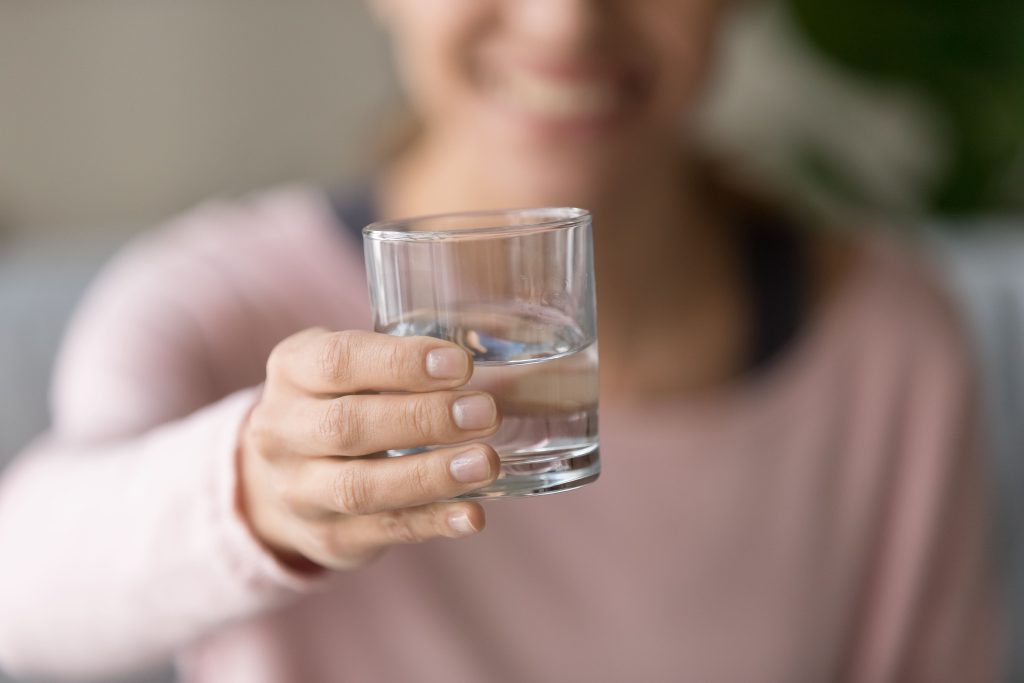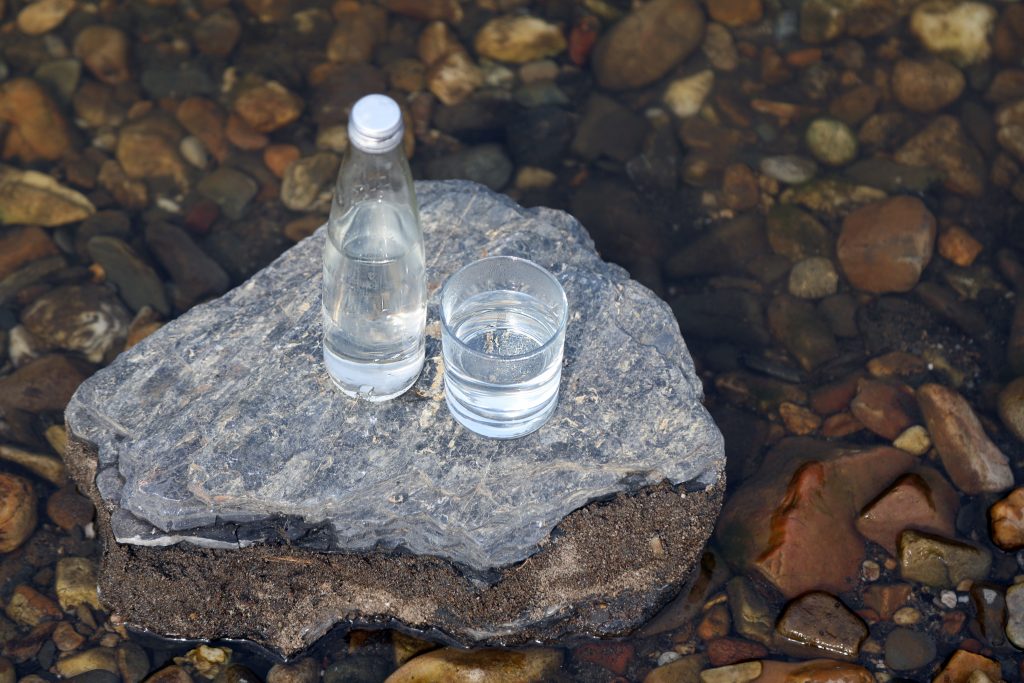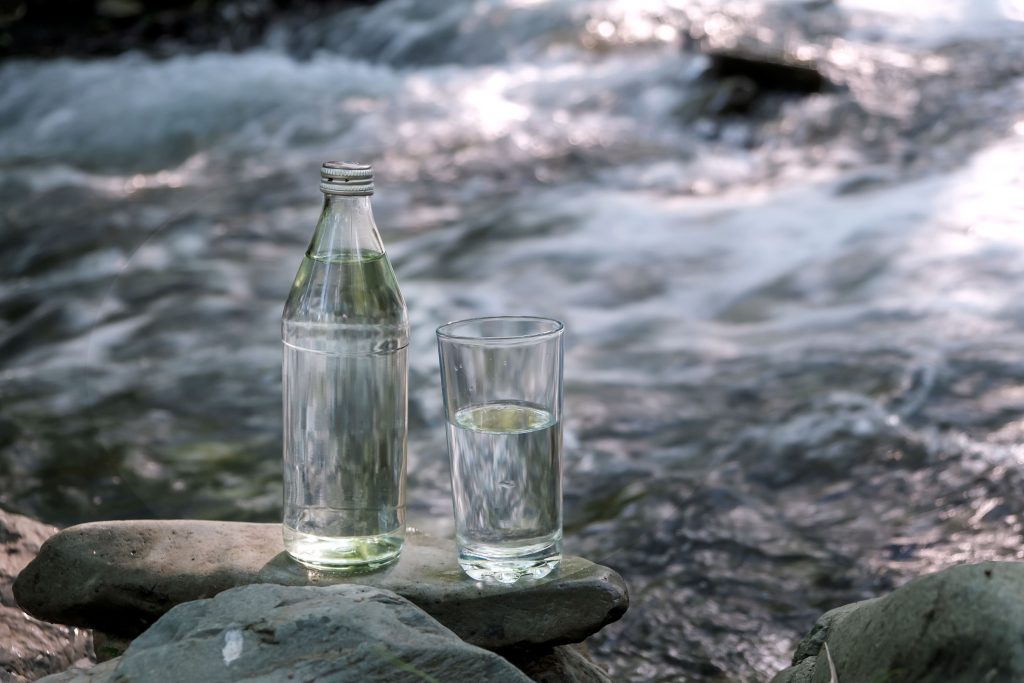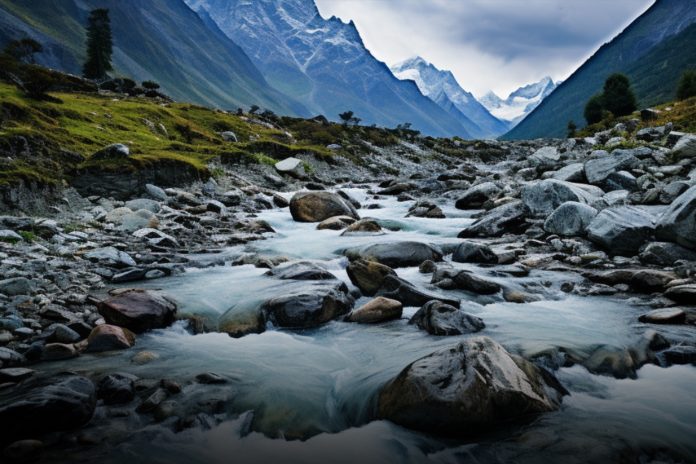Introduction:
Trekking in the Himalayas is an exhilarating adventure, but it comes with its challenges, particularly in accessing safe drinking water. To ensure your health and well-being, it is essential to understand the importance of water purification. This comprehensive guide will walk you through the various methods of water purification during your trek in the majestic Himalayas, offering valuable insights and tips for a safe and enjoyable journey.
Recognizing the Importance of Water Purification:
Begin by understanding the significance of water purification. The Himalayas boast breathtaking landscapes, but their water sources may harbor harmful bacteria, parasites, and pollutants. Consuming untreated water can lead to waterborne diseases, debilitating and ruining your trekking experience.

Pre-Trek Planning:
Before embarking on your Himalayan trek, research the route and identify water sources along the way. Map out potential water refill points and estimate your daily water needs. This information will help you plan and carry the appropriate water purification equipment.
Water Purification Methods:
a. Boiling:
Boiling water is the most effective and reliable method of purification. Carry a portable stove and a heat-resistant container to bring water to a rolling boil for at least one minute at lower altitudes and three minutes at higher altitudes. Boiling water is one of the oldest and most reliable methods of purifying water, especially during trekking in the Himalayas. It involves heating water to its boiling point to kill harmful microorganisms, making it safe for consumption. Here’s a more in-depth look at why boiling is an effective and essential water purification technique during your Himalayan trek:
Microbial Elimination: Boiling water effectively eliminates a wide range of harmful microorganisms, including bacteria, viruses, and protozoa. Pathogens such as E. coli, Giardia, and Cryptosporidium are commonly found in untreated water sources in the Himalayas, and boiling is highly effective in destroying them.
Accessibility and Simplicity: Boiling water is accessible and straightforward, requiring minimal equipment. A portable stove, lightweight fuel canisters, and a heat-resistant container are all you need. These items can easily fit into your backpack without adding significant weight to your load.
Independent of Water Clarity: Unlike other purification methods requiring relatively clear water to function optimally, boiling is effective regardless of water clarity. It can treat murky or sediment-laden water, which is common in natural water sources along trekking routes.
No Chemical Additives: Boiling water does not involve the use of any chemical additives, making it a natural and chemical-free way to purify water. This aspect is particularly appealing to trekkers who prefer not to introduce foreign substances into their drinking water.
Altitude Considerations: As you ascend to higher altitudes in the Himalayas, the boiling point of water decreases due to lower air pressure. At higher altitudes, the boiling point can be significantly lower than the usual 100°C (212°F) at sea level. To compensate for this, it’s essential to extend the boiling time at higher elevations. Boil water for at least three minutes at altitudes above 2,000 meters (6,562 feet) to ensure effective sterilization.
Social Aspect: Boiling water can also serve as a social activity during your trek. It allows you to gather with fellow trekkers around a campfire or stove, fostering camaraderie and creating memorable experiences as you share stories and enjoy the natural beauty of the Himalayas.

While boiling is highly effective, there are a few considerations to keep in mind:
Fuel Efficiency: Portable stoves require fuel, and the higher you trek, the colder the temperature. Ensure you carry enough fuel to last the duration of your trek, factoring in potential delays due to weather or other unforeseen circumstances.
Waiting for Cool Water: Boiled water needs time to cool before you can safely drink it. Plan your water consumption to avoid running out of safe water while waiting for the next batch to cool down.
In conclusion, boiling water is a tried and tested method of water purification during trekking in the Himalayas. It provides a simple, accessible, and effective way to safeguard your health and well-being, ensuring you have a memorable and safe journey through the awe-inspiring landscapes of the Himalayas. Always prioritize boiling water when purifying your drinking water during your trek.
b. Water Purification Tablets:
Water purification tablets have gained popularity among trekkers in the Himalayas due to their lightweight, portability, and ease of use. They offer a convenient solution for treating water from various sources during your trek. Here’s a more detailed explanation of why water purification tablets are favored and how they work:
Lightweight and Portable: Every ounce in your backpack matters when trekking in the rugged terrain of the Himalayas. Water purification tablets are incredibly lightweight and compact, making them an ideal choice for trekkers looking to minimize their load. They take up very little space and can easily fit into a small pouch or pocket.
Chemical Disinfection: Water purification tablets work by releasing chemicals into the water that effectively kill or neutralize harmful microorganisms, including bacteria, viruses, and protozoa. The most common chemical agents used in these tablets are chlorine, iodine, or chlorine dioxide. These chemicals disrupt the pathogens’ cellular structures, rendering them unable to cause illness.
Effectiveness: When used correctly, water purification tablets can provide a high level of water disinfection, making the water safe for drinking. They are particularly effective against common waterborne pathogens found in natural water sources, which may pose health risks to trekkers if ingested untreated.
Simple and Quick Process: Using water purification tablets is a simple and straightforward process. Most tablets come with clear instructions for dosage and waiting time. Typically, you drop the recommended number of tablets into a specific volume of water, agitate it to ensure thorough mixing, and then wait for the required time for the chemicals to take effect.
Versatility: Water purification tablets can be used to treat various water sources, including streams, rivers, lakes, and even tap water in some cases. This versatility makes them an excellent choice for trekkers exploring remote areas with limited access to clean water.
No Equipment Required: Unlike other water purification methods that may require equipment such as filters or UV purifiers, water purification tablets do not rely on any additional tools or devices. This simplicity makes them attractive for trekkers who prefer minimalistic gear setups.
However, it’s essential to consider a few points when using water purification tablets:
Taste and Odor: Some water purification tablets can leave a slight taste or odor in the treated water due to the chemicals used. This may not be pleasant for some individuals, but the water is safe for consumption.
Waiting Time: Follow the manufacturer’s instructions regarding the required waiting time for the tablets to effectively disinfect the water. Waiting times may vary depending on the specific tablet and water temperature.
Pre-Filtering: If the water is visibly turbid or contains debris, it’s advisable to pre-filter it using a cloth or a bandana to remove large particles before adding the purification tablets. This can enhance the tablets’ effectiveness by reducing the number of contaminants they need to treat.
In conclusion, water purification tablets offer trekkers in the Himalayas a convenient and reliable method of treating water from various sources. By following the manufacturer’s instructions for dosage and waiting time, you can ensure that the tablets effectively disinfect the water, providing you with a safe and convenient water purification solution throughout your trek.
c. Water Filters and Purifiers:
Invest in a high-quality water filter or purifier designed for outdoor use. These devices remove bacteria, protozoa, and some viruses, ensuring clean drinking water. Look for filters with a pore size of 0.2 microns or smaller for optimal protection. Investing in a high-quality water filter or purifier designed for outdoor use is highly recommended for Himalayas treks due to the following reasons:
Water Quality Assurance: Natural water sources in the Himalayas may be contaminated with various pathogens, including bacteria, protozoa, and even some viruses. A reliable water filter or purifier can effectively remove these microorganisms, ensuring that the water you drink is safe and free from harmful pathogens.
Comprehensive Protection: Water filters and purifiers offer comprehensive protection compared to other methods like boiling or chemical treatments. Boiling can kill most microorganisms but may not remove certain contaminants like sediment or chemical pollutants. Water filters with a pore size of 0.2 microns or smaller can physically block even the smallest bacteria and protozoa, providing a higher level of purification.
Convenience: Water filters and purifiers are convenient to use, especially during long treks in the Himalayas. They eliminate the need for carrying large quantities of fuel for boiling or the extra weight of water purification tablets. With a filter or purifier, you can collect water from natural sources along the way and have clean drinking water on demand without much effort.
Taste and Odour Improvement: Unlike chemical treatments that can leave a noticeable taste or odour, water filters and purifiers do not alter the taste of the water. This is especially appealing for trekkers who prefer the natural taste of water without any chemical aftertaste.
Environmental Impact: Water filters and purifiers are environmentally friendly as they do not require fuel burning or chemical-treated water disposal. Using a filter minimizes your ecological footprint and contributes to preserving the pristine environment of the Himalayas.
Health Benefits: Consuming clean and safe water is crucial for maintaining good health during a physically demanding trek. Waterborne illnesses can lead to dehydration, and weakness, and potentially ruin the entire trekking experience. A high-quality water filter or purifier can help prevent these issues and ensure you stay healthy and energized throughout your journey.
However, there are some considerations to keep in mind:
Initial Investment: High-quality water filters and purifiers designed for outdoor use can be more expensive upfront than other purification methods. However, they often offer better durability and long-term performance, making them a worthwhile investment for frequent trekkers or adventurers.
Maintenance: Water filters and purifiers require periodic maintenance, such as cleaning and replacing filter elements. It’s essential to follow the manufacturer’s guidelines and carry any necessary spare parts to ensure the device functions optimally throughout your trek.
Filter Clogging: In particularly turbid water sources, filters may clog faster, reducing their flow rate and efficiency. In such situations, pre-filtering the water through a cloth or bandana can help extend the life of the filter.
In conclusion, investing in a high-quality water filter or purifier designed for outdoor use is highly beneficial for Himalayas treks. These devices provide reliable and comprehensive water purification, ensuring that you have access to clean and safe drinking water throughout your journey. Look for filters with a pore size of 0.2 microns or smaller for optimal protection, and be sure to maintain and care for the filter properly to maximize its effectiveness and lifespan.
d. UV Sterilization:
UV water purifiers use ultraviolet light to neutralize harmful microorganisms. They are lightweight and easy to operate, but they rely on batteries, so carry spares and ensure they are fully charged before your trek. UV water purifiers are an effective and convenient method of water purification during Himalayan treks. These devices utilize ultraviolet light to neutralize harmful microorganisms, providing trekkers with clean and safe drinking water. Here’s a more detailed explanation of the usage of UV water purifiers during Himalayan treks:
Ultraviolet (UV) Water Purification Technology: UV water purifiers work by emitting ultraviolet light at a specific wavelength (typically around 254 nanometers). When water is exposed to this UV light, it damages the DNA of microorganisms like bacteria, viruses, and protozoa, rendering them unable to reproduce and cause illness. The process is quick and efficient, making the water safe for consumption within seconds.
Lightweight and Portable: One of the significant advantages of UV water purifiers is their lightweight and compact design. They are specifically designed for outdoor use and are favored by trekkers due to their portability. UV purifiers can easily fit into a backpack without adding much weight, making them a practical choice for those seeking to travel light during their Himalayan trek.
Ease of Operation: Using a UV water purifier is simple and user-friendly. Most UV purifiers have a straightforward interface with a single button to activate the UV light. Trekkers need to immerse the purifier into the water and press the button to start the purification process. Some devices also come with indicators or screens to show when the purification is complete.
Fast Purification Process: UV water purifiers provide rapid water purification, usually taking only 60 seconds to a few minutes to treat a single liter of water. This speed is advantageous for trekkers who may need to hydrate quickly or refill their water bottles during short breaks.
Battery Reliance: A key consideration when using a UV water purifier is its reliance on batteries. Trekkers must carry spare batteries and ensure they are fully charged before embarking on the trek. Depending on the model and battery capacity, a single set of batteries can last for a considerable number of water treatments, but having backups is essential, especially for longer treks.
Water Clarity: UV water purifiers are most effective when used in clear or relatively clear water. Particles and sediment in turbid water can reduce the efficiency of the UV light, potentially leaving some microorganisms untreated. If using a UV purifier with murky water, it’s advisable to pre-filter the water through a cloth or bandana to remove larger particles.

However, there are some considerations to keep in mind:
While UV water purifiers are excellent for neutralizing microorganisms, they do not remove sediment, chemicals, or other contaminants from the water. If the water source is known to contain chemical pollutants or heavy metals, it’s best to combine UV purification with another method like filtering or chemical treatment for more comprehensive water purification.
In conclusion, UV water purifiers are a reliable and efficient water purification method during Himalayan treks. Their lightweight, easy operation, and fast purification process make them popular for trekkers seeking safe drinking water without carrying excessive gear. However, always ensure you have spare batteries and consider pre-filtering if the water source is visibly turbid. With proper usage and preparation, UV water purifiers can significantly contribute to a successful and enjoyable trekking experience in the breathtaking landscapes of the Himalayas.
Water Conservation while Purifying Your Water
In remote Himalayan regions, water sources may be scarce. Conserve water whenever possible by using it efficiently for drinking and cooking purposes. Avoid wasting water during purification processes. When undertaking water purification methods during treks in the Himalayas, it is crucial to ensure minimal water wastage for several reasons, including the water scarcity in the region and the challenging living conditions faced by Himalayan dwellers.
Scarcity of Water in the Himalayas:
The Himalayas are known for their magnificent beauty but are also a region of water scarcity. Despite being the source of many major rivers, water availability can be limited due to several factors:
- Melting Glaciers: The Himalayan region is home to numerous glaciers that act as significant water reservoirs. However, due to climate change, many of these glaciers are retreating, affecting the regular flow of rivers and streams.
- Seasonal Variation: The Himalayas experience extreme seasonal variations, with wet monsoons and dry winters. During the dry months, water sources may dwindle, leaving trekkers with fewer options for accessing clean water.
- Remote Locations: Many trekking routes in the Himalayas lead through remote and high-altitude regions where water sources may be scarce or distant, requiring careful planning and conservation.
The Struggle of Himalayan Dwellers:
Life for the people living in the Himalayas is challenging, especially for those residing in remote villages or high-altitude regions. These dwellers often face the following difficulties related to water:
- Long Distances: Some Himalayan dwellers have to walk long distances to collect water from the nearest water source, which could be hours away. Water scarcity can become acute in these regions, particularly during dry seasons.
- Dependence on Nature: Himalayan communities heavily depend on natural water sources for their daily needs, including drinking, cooking, and agriculture. Any disruption in the availability or contamination of water can have severe consequences on their livelihoods.
- Waterborne Diseases: Inadequate access to clean water puts Himalayan dwellers at risk of waterborne diseases, leading to health issues and economic burdens on already marginalized communities.
Considering these challenges faced by both trekkers and Himalayan dwellers, it becomes essential to minimize water wastage during water purification methods on treks. Here are some tips to ensure responsible water usage:
Plan Ahead: Before embarking on a trek, research the availability of water sources along the route and carry enough water purification equipment to minimize the need for excessive water collection.
Filter and Store Water: Instead of purifying water in small batches, filter and store larger quantities of water when you come across a reliable water source. This way, you reduce the frequency of water purification and the associated water wastage.
Educate Trekkers: Raise awareness among fellow trekkers about the importance of conserving water during the journey. Encourage responsible practices, such as using water purification tablets efficiently and avoiding unnecessary wastage.
Respect Local Practices: When passing through Himalayan villages, respect the locals’ water usage practices and refrain from depleting their water resources.
Minimize Water for Cleaning: During trekking, use water efficiently for personal hygiene and cleaning, especially if water is scarce in the area.
By being mindful of water usage and avoiding wastage, trekkers can help preserve this precious resource for themselves and the Himalayan communities, contributing to the sustainability and preservation of this breathtaking region.
Conclusion:
Safe drinking water is crucial for a successful and enjoyable trekking experience in the Himalayas. By understanding the various water purification methods, planning ahead, and practising responsible water usage, you can safeguard your health and fully immerse yourself in the awe-inspiring beauty of the Himalayas. Prioritize water purification, and your journey through these majestic mountains will be both safe and unforgettable.
